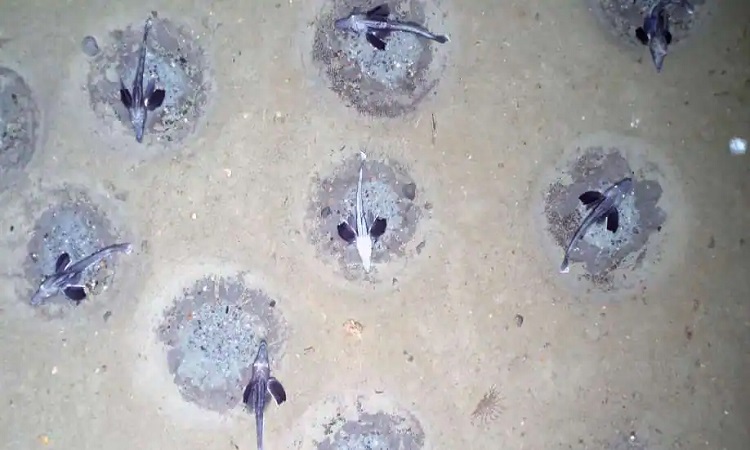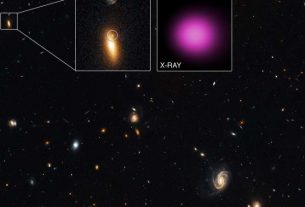While studying whales aboard an icebreaker in Antarctica, German researchers stumbled upon a whole different treasure. At the bottom of the Weddell Sea, more than 300 meters deep, were indeed the outlines of thousands of icefish nests, each guarded by a ghostly-looking relative whose dark pectoral fins were spread like bat wings on a clutch of eggs.
An exceptional discovery
A few months ago, Autun Purser and his team at the Alfred Wegener Institute were monitoring whale populations in the Weddell Sea aboard their icebreaker, the RV Polarstern. One day, while observing the seabed with the camera towed at the rear of the ship, one of the expedition members, Lilian Böhringer, noticed the presence of numerous sandy craters dug in the ground. All contained a single immobile icefish under which was hiding a clutch of several hundred eggs.
Native to the cold southern oceans, these fish (Neopagetopsis ionah) are the only vertebrates known to be completely lacking in hemoglobin in their blood. For this reason, they are considered “white-blooded”.
After the initial discovery, the team made several subsequent passes through the site. After a thorough study, they counted about sixty million nests covering an area of 240 square kilometers.
The researchers, who publish their work in the journal Current Biology, were there precisely to study an upwelling of water about two degrees Celsius warmer than the surrounding water. “Our goal was to see how carbon moves from the surface to the seabed and which communities are in the water column,” Dr. Purser points out.
A rare ecosystem
Inside the column, the researchers found zooplankton near the surface, where young icefish come to feed after hatching before returning to the sea floor to reproduce. Because of this food source, the presence of these icefish was to be expected, but the researchers did not imagine a nursery of such magnitude.
Along with fish guarding the nests, the area was littered with carcasses. For the team, this suggests that the colony is an integral part of the local ecosystem, most likely serving as prey for Weddell seals.
Before leaving the area, the researchers left two cameras to observe the inner workings of this ecosystem. They also plan to return there next spring.

Email: mary@satprwire.com Phone: +44 20 4732 1986
Marry is a fitness freak in every manner and gives proper care about her health and of others. She is probably the best person we have at Daily Research News for covering articles from the Health sector. If not at work, she can be seen drinking a cup of coffee.



